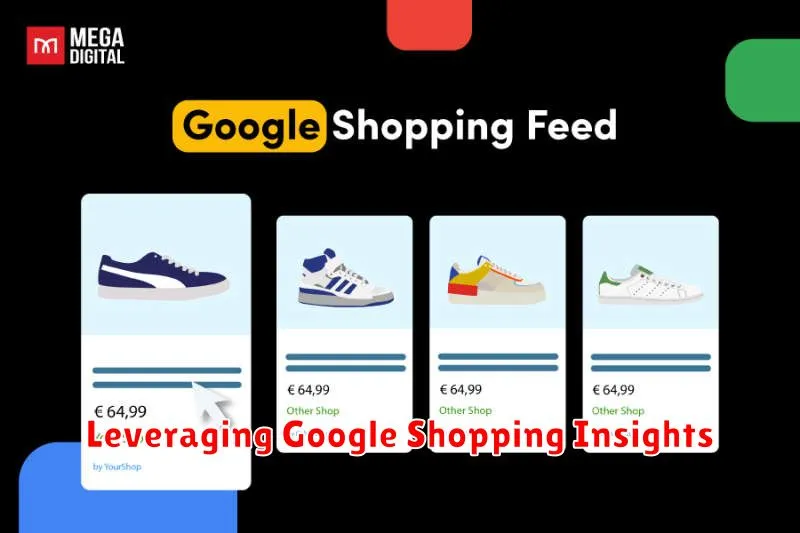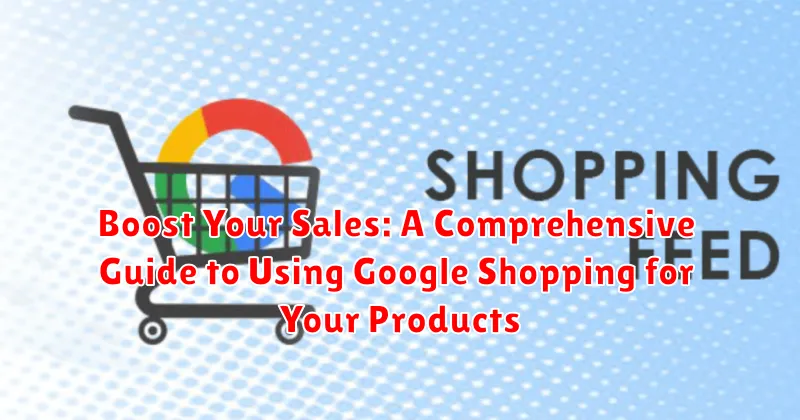Are you looking to boost your sales and reach a wider audience for your products? In today’s competitive online marketplace, leveraging the power of Google Shopping is essential for any business looking to thrive. This comprehensive guide will provide you with the knowledge and strategies you need to effectively utilize Google Shopping to showcase your products, attract high-quality leads, and ultimately, increase your sales.
From setting up your Merchant Center account and creating compelling product feeds to optimizing your shopping campaigns for maximum visibility and return on investment, this guide covers everything you need to know to succeed with Google Shopping. Learn how to leverage product titles, descriptions, and images to capture the attention of potential customers and drive conversions. Discover the intricacies of bidding strategies, campaign structures, and performance tracking to ensure your Google Shopping efforts are yielding the best possible results. Get ready to unlock the full potential of Google Shopping and take your online sales to the next level.
Understanding the Power of Google Shopping
Google Shopping offers a powerful way to showcase your products directly to potential customers actively searching for items like yours. Unlike traditional text-based ads, Google Shopping displays rich product listings, including images, prices, and your brand name, making it easier for shoppers to find what they’re looking for.
By leveraging Google Shopping, you can increase your visibility to a highly engaged audience. Shoppers using Google Shopping are often further along in the buying process, actively seeking products rather than just browsing. This targeted approach can lead to higher conversion rates and a better return on investment for your advertising spend.
Google Shopping listings appear prominently at the top of search results pages, often above organic results and text ads. This prime placement gives your products maximum exposure to potential buyers.
Creating a Google Merchant Center Account
A Google Merchant Center account is essential for showcasing your products on Google Shopping. It’s the central hub where you’ll manage your product data, shipping information, and other crucial details. Follow these steps to get started:
First, navigate to the Google Merchant Center website and click the “Sign up” button. You’ll need a Google account to proceed. If you manage multiple businesses, it’s best to create a separate Merchant Center account for each.
Next, provide accurate information about your business. This includes your business name, address, and website. This information must be consistent with your website and other online profiles.
After providing your business information, you’ll need to verify and claim your website. This process confirms that you own the website you listed and allows Google to access your product data. Several verification methods are available, such as adding a meta tag to your website or uploading an HTML file.
Once your website is verified, you can begin setting up your product feed. This is a structured file containing all the necessary details about your products, such as title, description, price, and availability.
Optimizing Your Product Feed for Success
A well-optimized product feed is crucial for successful Google Shopping campaigns. It ensures your products are accurately represented and easily discoverable by potential customers. Here’s how to maximize your feed’s potential:
Key Optimization Areas:
- Accurate Product Titles: Use clear, concise titles that include relevant keywords and accurately reflect the product being sold.
- Detailed Descriptions: Provide comprehensive descriptions highlighting key features and benefits. Be specific and avoid generic language.
- High-Quality Images: Use professional, high-resolution images that showcase your products in the best possible light.
- Correct GTINs/MPNs: Including Global Trade Item Numbers (GTINs) or Manufacturer Part Numbers (MPNs) helps Google accurately identify and categorize your products.
- Competitive Pricing: Regularly review and update your pricing to ensure competitiveness within the market.
- Availability Updates: Keep your availability information accurate and up-to-date to avoid wasted ad spend on out-of-stock items.
By focusing on these key areas, you can significantly improve the performance of your Google Shopping campaigns and drive more sales.
Setting Up Your Google Ads Campaigns
Once your product feed is optimized and submitted to Google Merchant Center, the next crucial step is setting up your Google Ads campaigns. This is where you’ll control your budget, targeting, and bidding strategies.
Begin by linking your Google Ads and Merchant Center accounts. This connection allows your product data to flow into your Ads campaigns. Campaign creation starts by choosing the “Shopping” campaign type and selecting your Merchant Center account.
Next, define your campaign settings, including your campaign name, country of sale, and bidding strategy. Consider experimenting with different bidding strategies, like “Maximize Clicks” or “Target ROAS,” to determine what delivers the best results for your business. Setting a daily budget is essential to control your spending.
Targeting is another critical aspect. You can choose to target specific locations, devices, and demographics. Consider where your ideal customers are and tailor your campaign accordingly.
Managing Your Shopping Campaigns Effectively
Continuous monitoring and optimization are crucial for successful Google Shopping campaigns. Regularly review your campaign performance using key metrics like click-through rate (CTR), conversion rate, and return on ad spend (ROAS).
Bid management is essential for controlling costs and maximizing returns. Experiment with different bidding strategies, such as manual CPC, enhanced CPC, or target ROAS, to find the optimal approach for your business goals.
Regularly analyze your product feed for any errors or inconsistencies. Ensure your product titles, descriptions, and attributes are accurate and up-to-date to improve visibility and relevance.
Segmentation can significantly enhance campaign performance. Divide your products into relevant groups based on criteria like brand, category, or price. This allows for more targeted bidding and messaging.
Leveraging Google Shopping Insights

Google Shopping Insights provides valuable data to understand product demand and competitor landscapes. This data is crucial for optimizing your campaigns and maximizing your return on investment.
Use these insights to understand:
- Trending Products: Identify which products are gaining popularity and adjust your bids and inventory accordingly.
- Seasonal Demand: Anticipate fluctuations in search volume based on time of year and plan your promotions strategically.
- Regional Interest: Discover where your products are most sought after and target your campaigns geographically.
By analyzing this data, you can refine your product offerings, adjust your bidding strategies, and improve your overall campaign performance.
Staying Ahead of the Curve with Google Shopping Trends
Staying competitive in Google Shopping requires a proactive approach to understanding and adapting to evolving trends. Monitoring these trends allows you to optimize your campaigns for maximum visibility and return on investment.
Mobile shopping continues to rise. Ensure your product data and landing pages are optimized for mobile users, providing a seamless shopping experience across devices. Analyze your mobile traffic and conversion rates to pinpoint areas for improvement.
Visual search is gaining traction. High-quality product imagery and rich product descriptions are crucial. Consider 360-degree views and lifestyle images to enhance the visual appeal of your listings.
Personalized shopping experiences are increasingly important. Leverage audience targeting and retargeting strategies to deliver relevant product recommendations to potential customers. Utilize Google’s features for personalized recommendations and dynamic remarketing.
Troubleshooting Common Google Shopping Issues

Encountering issues with your Google Shopping campaigns can be frustrating. This section addresses common problems and offers solutions to get your campaigns back on track.
Product Disapprovals
One of the most frequent issues is product disapproval. This occurs when your product data doesn’t meet Google’s requirements. Carefully review the disapproval reasons provided in your Merchant Center account. Common reasons include missing required attributes, inaccurate product descriptions, or violations of Google’s Shopping policies.
Low Click-Through Rate (CTR)
A low CTR can indicate issues with your product titles and descriptions. Ensure your titles are accurate, concise, and include relevant keywords. Use high-quality images that showcase your products effectively. Competitive pricing can also significantly impact CTR.
Campaign Performance Issues
If your campaigns aren’t generating the desired results, consider reviewing your bidding strategy. Experiment with different bid adjustments based on location, device, and time of day. Regularly monitor your campaign performance and make adjustments as needed.

